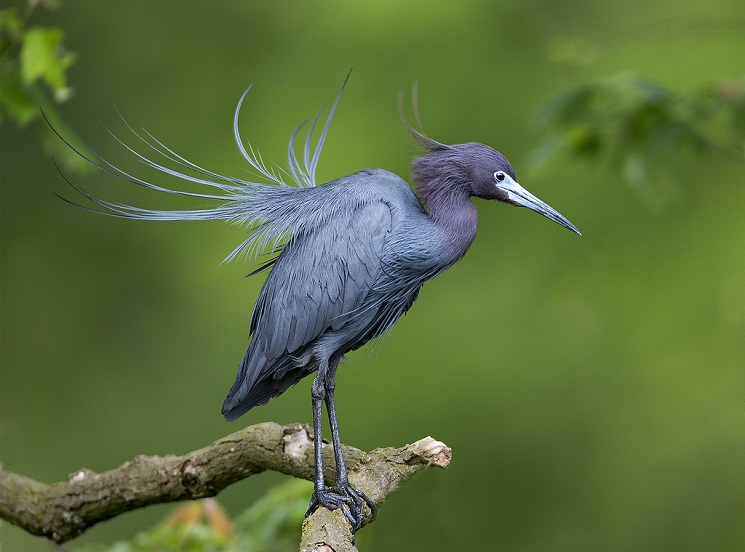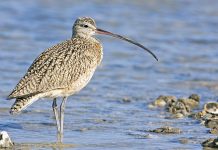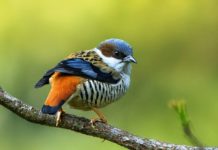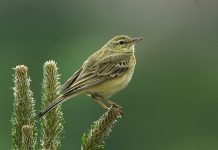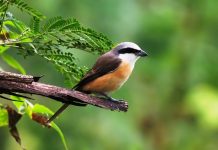Little Blue Heron (Egretta caerulea)
Little Blue Heron (Egretta caerulea) is a small, graceful, and slender heron of the genus Egretta and part of the fascinating family Ardeidae.
Habitat: The Little Blue Heron can be found around marshes, ponds, lakes, lagoons, saltwater, and streams. This heron is shy and will usually fly away, long before a person can get very close. They usually leave the rookery at daybreak and return at dusk to roost. They walk along the water’s edge, stalking their prey. The young are fed regurgitated food by their parents. The bird builds a nest in colonies with other species. Similar to other herons, this species stands still and waits for hours to hunt, rather than chase after prey. They prefer to walk slowly to reach the fish. Sometimes tend to be slower than other species, making them more different from other species.
Size: Both male and female are about 22–29 inches in length, with a wingspan of 39–41 inches, and weigh about 385-399 grams. Female lays 3 to 5 eggs, and both sexes take their responsibilities to incubate.
Diet: Like all herons, Little Blue Heron is also opportunistic and takes a broad range of prey, including frogs, fish, crayfish, insects, snakes, lizards, and spiders, all of which are swallowed whole. They sometimes feed on grassy fields.
Status: The Little Blue Heron is an uncommon transient and summer resident. Populations have been increasing rapidly since 1980.
Period of Occurrence: This little blue heron is commonly found in Central America, the Southeast United States, and northern South America. There is a record with dates 2 March and 19 December, but the average dates of arrival and departure are 6 April and 5 October. This species was formerly a post-breeding wanderer but is now a summer resident. Numbers are augmented in late summer by arrivals from farther south.
Breeding: This heron has become a regular breeding bird since 1952. A large colony nests primarily in Black Willow trees on the edge of Hutchinson, Reno County. A recent colony has formed on the south edge of Wichita, Sedgwick County, and it is the largest heronry in the state. Several hundred Little Blue Herons nest there in a tree nursery. There are undoubtedly more undiscovered colonies in the state. A colony in Harper County moved after one year and has not been located again, although large numbers of birds have been seen in the area. Nests are usually placed in low shrubs, trees, and cattails. The nest is a typical heron nest made of sticks and is often destroyed by gale-force winds. The herons usually lay four to five eggs, but there may be as many as six. The incubation period is 21 to 23 days, and the young take about 30 days to fledge.
Field Marks: Usually, more subadults than adults are seen in Kansas. Birds with intermediate molts showing both blue and white feathers are frequently seen. Young birds are totally white, which makes them easy to confuse with any white egrets that also occur in the state, frequently in the same rookery. It has two-toned bills which are light blue at the base and black tips. The young herons are completely white. Some birds are migratory. Both sexes have the same colorations. Moreover, in the courtship, both sexes practice bill-nibbling. The male birds use a neck-stretch to attract females. The adult heron has slate-blue plumage with a stunning maroon-purple head and neck, giving them a spectacular two-tone look.
